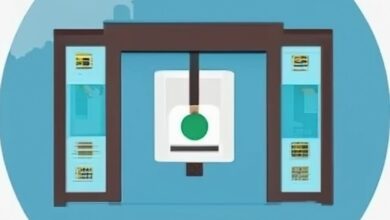Do you have a loan? 5 step rule of post-loan management

1. A Recognition
With the gradual popularization of credit risk control technology in China, the concept of credit risk control is becoming more and more mature, and the concept of whole-process credit risk control is one of the representatives. Under this conceptual framework, there is a new understanding of post-loan management, including two aspects. :
First, post-loan management is the last link in the credit process, but it is the starting point for risk control to enter the verification stage. Because the pre-loan and loan are based on certain evidence to infer or predict that the customer will repay on time, and the post-loan management is after the loan is released, when the loan has entered the repayment period, whether the customer will repay on time. To use an analogy: pre-loan and mid-loan are like mock exams before the college entrance examination, and the repayment situation after the loan is like the college entrance examination, which is the real battlefield to verify the merits of the results. How to choose the right school and major.
Second, post-loan management and pre-loan and loan processes are not isolated but interrelated. Post-loan management is the connector between two or more loan processes for the same customer, which enables the three links of pre-loan, mid-loan and post-loan to realize a spiral cycle. To put it simply, the post-loan management plan is determined based on the comprehensive pre-loan and mid-loan ratings, and the information obtained from the post-loan management is incorporated into the comprehensive rating to lay the foundation for the next pre-loan investigation.
2. Two basic principles
Due to the large number of customers and high management costs for small and micro loans, post-loan management must be considered as a whole. Instructions are transmitted from top to bottom, and information is transmitted from bottom to top. To do a good job in post-loan management of small and micro customers, you need to comply with the following two items The basic principle.
Systemic Principle
For institutions, doing a good job in post-loan management of small and micro customers is a huge systematic project, so it needs systematic consideration, which is mainly reflected in linkage, comprehensiveness and hierarchy.
The linkage refers to the linkage of the three links before, during and after the loan, which has been explained above;
Comprehensiveness refers to the full coverage of customers (all credit lending customers need to be included in the post-loan management system) and the full coverage of risk points (all common risk points for small and micro customers must be included in the post-loan management system);
Hierarchical refers to stratifying customers according to comprehensive rating, actual repayment situation and unexpected factors, and formulating different post-loan management mechanisms according to customer conditions at different levels, so as to allow some losses.
Practicality Principle
For institutions, doing a good job in post-loan management of small and micro customers is mainly for risk control, not formalism, so its practicality must be considered, which is mainly reflected in the landing, applicability and informatization.
Institutions should first consider how to make post-loan management really fall into place;
Secondly, consider what kind of post-loan management is really suitable for small and micro customers;
Finally, consider how to realize the electronic and sharing of post-loan management information, and what kind of credit management system support is needed.
Three, three forms of evolution
From the actual repayment situation of small and micro customers, customers can be divided into three forms, including:
- Normal class (payment on time, normal/concerned class)
- Overdue classes (1-90 days in arrears, secondary classes)Non-performing category (more than 90 days in arrears, suspicious/loss category)
- (Note: Substandard, doubtful and loss loans are classified as non-performing loans according to CBRC regulatory standards)
According to the customer’s repayment situation, the normal evolution path of small and micro loans is from normal to overdue, and then to non-performing. After the loan is classified as non-performing, it will enter the formal collection stage. As a result, there may be customer fundraising settlement, prosecution and execution settlement, package disposal and non-performing write-off processing. Develop corresponding post-loan management standards and procedures according to different stages.
Four, four main types of work
From the micro-operation level, the post-loan management of small and micro customers mainly does the following four tasks:
1-Implement customer repayment
In the post-loan management work, the implementation of customer repayment is the primary goal, because this involves the non-performing rate, interest income and profit level of the institution. The main work is reflected in:
- For normal customers: remind customers on time how to make repayment. Generally, customers with equal repayment need to remind customers for repayment 3 days in advance, and for one-time repayment, they need to remind customers for repayment 30 days in advance; understand the real repayment of customers Source, whether there is an overdraft credit card repayment for customers with equal repayment, for customers who repay the principal at one time, how much is repayment with their own funds, and how much is repayment through other financing channels, these are risk factors;
- For overdue customers: it is necessary to cooperate with the collection department to reach a repayment plan with the customer, so that the customer can repay according to the plan;
- For non-performing customers: It is necessary to work with the legal department to form a disposal plan to urge customers to repay or settle loans as planned.
2-Update customer status
According to the function of post-loan management in risk control, due to the variability of small and micro customers, it is necessary to timely track the development trend of customers and update customer status, mainly including financial and non-financial factors.
- Financial factors include main financial indicators, such as sales, main assets, liabilities, profit levels, etc., and compare them with the data in the pre-loan survey to see if there are any abnormalities;
- Non-financial factors include family situation, business model, business projects, shareholding structure and industry trends, etc., to see if there are unfavorable factors.
3-learn industry knowledge
For institutions and account managers, learning industry knowledge, including customer industry knowledge and credit industry knowledge, is particularly important for improving risk control accuracy and customer experience.
First of all, in view of the customer’s industry knowledge, the customer manager must consciously collect industry-related information during the post-loan return visit. Generally speaking, the industry information of 5 companies in the same industry is summarized to form a simple industry report, which will reach this industry. initial cognitive level. On the basis of industry summary, it will be easier and more accurate to conduct investigation and decision-making when encountering the same type of customers in the future, and the sense of customer experience will naturally be better.
Secondly, for the knowledge of the credit industry, it is necessary for institutions to summarize the reasons for the formation of overdue and non-performing customers and their disposal plans, summarize them into a case database, and carry out popular learning in the institution. When encountering customers of the same type in the future, they can effectively learn from the previous practical experience, so as to better Good prevention and avoidance of risks.
4-In-depth marketing of customers
In the process of post-loan management, of course, the opportunity for marketing will not be given up. This is also the main method of customer acquisition for most account managers who have a certain period of employment. There are three main directions:
- Vertically, it refers to the upstream and downstream customers in the industry chain, such as customers who open restaurants and upstream customers who wash dishes or deliver vegetables.
- Horizontally, it refers to customers who are engaged in the same industry, for example, they are all selling liquor, and they may have different brands;
- Circles, such as circles of relatives and friends, such marketing efficiency and accuracy will be higher.
Five, five guarantee mechanism
For institutions, in order to make the post-loan management of small and micro customers not take the form, fall to the ground, and work, it is necessary to consider the following five aspects of support.
Content Standardization
According to the above three forms, different post-loan management plans are formulated, and the specific contents are as follows:
(1) Normal customers
The post-loan management of normal customers is generally divided into after the first loan, after the conventional loan and after the unconventional loan. After the first loan, it is like a daughter getting married, and she will return to visit within three days. After an unconventional loan, it is like going home to visit when a major emergency occurs in the family’s family.
After the first loan, generally within 15-30 days after the loan is issued, the content of the loan has three aspects:
- Whether the loan purpose is implemented
- Make your first repayment
- service satisfaction
Among them, the most important implementation of the loan purpose can be verified by means of running water, contracts, incoming and outgoing bills, invoices, and on-site observation. If you find that the customer has not fulfilled the loan purpose according to the application, you must first understand where the customer is using the loan. Second, understand why change the use? Finally, assess whether the new loan use will bring risks and whether the institution can afford it? If you can’t afford it, you can choose to repay the loan early.
Conventional post-loan content generally includes financial factors and non-financial factors. The specific content has been explained above. Note that in work practice, post-loan work is to obtain information by chatting with customers. Under normal circumstances, customers do not need to lie, so no matter what. Whether it is financial or non-financial information is generally no longer verified in detail, otherwise it will bring a very bad feeling to customers.
Unconventional post-loan means that when a customer encounters an emergency, it mainly evaluates the impact of the emergency on the customer’s operations and normal repayment, and adopts targeted strategies for different degrees of impact, generally including increasing loan issuance and reorganizing loans. For example, an owner who is engaged in selling clothing in a shopping mall encounters the closure of the mall as a whole, which directly affects its normal operation. If it is only temporarily closed, the impact is relatively small. At this time, the repayment plan can be changed appropriately. For example, if the current period is temporarily suspended, the repayment period will be postponed. If it is predicted that the business will be closed for a long time, the impact will be relatively large and even fatal. If yes, then it is necessary to evaluate whether the customer has other repayment sources, including negotiating the repayment plan with the guarantor, and readjusting the repayment plan according to the customer’s repayment ability.
(2) Overdue customers
For overdue customers, post-loan management mainly focuses on the following four aspects:
- To understand the reasons for overdue, one is caused by subjective reasons; the other is caused by abnormal operating capabilities; the third is caused by other external factors, such as banks shrinking loans to the industry, resulting in tight cash flow of customers. For the first category, it is necessary to strengthen the education of customers, explain the harmfulness of overdue, and basically it can be converted into normal loans; for the second and third categories, it is necessary to proceed to the next step.
- Reassess your ability and willingness to repay;
- On the basis of the evaluation, a new agreed repayment plan is reached. If the two parties cannot negotiate, go to the next step;
- If there is a guarantee, notify the guarantor to discuss countermeasures together, and if there is collateral, check the situation of the collateral, and re-evaluate the value of the collateral.
The above four tasks are carried out step by step and gradually deepened. On the one hand, it puts pressure on customers, on the other hand, it finds problems in time, adjusts the repayment plan according to the status of customers, and strives to make the overdue category into the normal category.
(3) Bad customers
For non-performing customers, post-loan management mainly focuses on:
- Search all the client’s asset information, income source information and social network information, conduct comprehensive evaluation, and lay the foundation for follow-up work;
- Negotiate with customers, guarantors and other relevant personnel to indicate the institution’s attitude towards loan processing and see if it can facilitate the settlement of the loan plan;
- If the negotiated results are not fulfilled, prosecution proceedings can be initiated.
It has been proved by practice that once it enters the non-performing state, there will be a certain degree of problems in the repayment ability and willingness, and it is often impossible to make a decision. In the end, it is forced to initiate the prosecution process. The specific effect depends on the customer’s default cost of the loan.
Institutionalize
In order to implement the post-loan management of small and micro customers and effectively serve risk management, at least four aspects of the system are required:
- Operation management system, the specific content includes operation content, process, frequency and form, etc.;
- The performance appraisal system is to incorporate the post-loan management work into the normal performance appraisal, so that if you do a good job, you will get performance, and if you do a bad job, you will get less performance;
- The post-loan management audit system is to bring post-loan management into the scope of audit, and let the audit supervise whether the post-loan management is done or not and whether it meets the standard.
- Comprehensive management systems, such as monthly post-loan work announcements, quarterly post-loan management work meetings, and the establishment of a non-performing loan case database.
Process Differentiation
Due to the huge number of small and micro customers, in order to save manpower and time resources without losing the focus of work, different reporting processes are formulated for three types of customers:
- The post-loan management of normal customers is initiated by the account manager, and the report is completed by the team leader or supervisor;
- The post-loan management of overdue customers is initiated by the account manager. After review by the collection department, it will be reported to the team leader or supervisor, and then summarized and reported to the risk department, and finally to the person in charge;
- The post-loan management of non-performing customers is initiated by the account manager. After review by the legal department, it is reported to the team leader or supervisor, and the risk department and the audit department are summarized and reported to the person in charge.
Diversified Forms
There are on-site and off-site methods for post-loan management for small and micro customers:
- The on-site form refers to going to the customer’s business site and communicating with the customer to obtain relevant information or negotiate. The above-mentioned types of post-loan management (unless conventional post-loan) basically need to be on-site.
- Off-site mode refers to obtaining relevant information or negotiating without the customer’s business premises or face-to-face, such as telephone, WeChat, etc. In order to save post-loan work time, in addition to the above-mentioned forms that require on-site post-loan management, other Offsite methods are possible.
Frequency Moderation
Due to the large number of small and micro customers and their own particularities, if the post-loan management of all customers is too frequent, time-wasting and customer experience is not good, you can try to adopt different post-loan frequencies according to the comprehensive rating of customers before and during the loan. , which can not only save time and improve efficiency, but also implement monitoring of key points to ensure the prevention and control of risks. The specific post-loan frequency arrangements are as follows:
The time arrangement after the first loan for all customers is unified, within 15-30 days after the loan;
- A1 (premium) customers, after a regular loan every six months;
- A2 (high-quality) customers, after a regular loan every quarter;
- B1 (good) customers, after a regular loan every two months;
- B2 (general) customers, after a regular loan every month.
Overdue and non-performing categories are transformed into normal categories, and customers need to be re-rated. However, after the first three months, a regular loan is required every month, and then regular post-loan management can be carried out according to normal customers.


